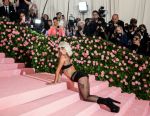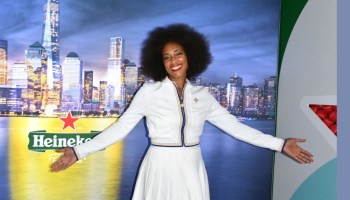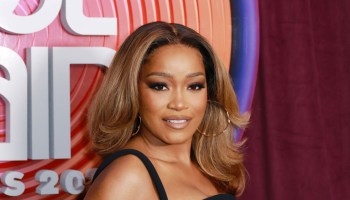Black Girl Magic was started by CaShawn Thompson in 2013 as a way to “celebrate beauty, power, and resilience of Black women,” and has since become a widespread term. We knew all along it existed but didn’t quite know how to describe it. I imagine women like Zelda Barbour Wynn Valdes saw the early signs of Black Girl Magic. She made an entire career out of pushing the boundaries and promoting inclusion within the fashion industry. Her designs extenuated the curves of black women, allowing for opportunities for black women to celebrate their bodies instead of hiding them.
Valdes saw the beauty in the black woman’s body at an early age. She learned how to sew by watching her grandmother’s seamstress and even constructed her first dress for her grandmother after being told it couldn’t be done because her stature was too tall and too big. The dress fit perfectly. Valdes graduated from high school in 1923 and moved to New York with her family where she started working in her uncle’s tailoring shop. In the early 1930s, Valdes started working at a high-end boutique as a stock girl. Over time, she worked her way to becoming the shop’s first black sales clerk and tailor.
Valdes didn’t last long at the boutique, starting her own business in White Plains, NY in 1935. Valdes became so popular in the area that by 1948 she opened her own boutique called Chez Zelda in Manhattan located on Broadway and West 158th Street. She was the first black designer to do so. Valdes’ boutique was also the first black-owned business in the area. It quickly gained the attention of black Hollywood’s elite. After some time, the boutique relocated to 151 57th street in midtown Manhattan. Valdes’ sister worked as her assistant and she had a staff of 9 dressmakers who helped her create her elaborate designs. It is documented that she charged just shy of $1,000 for a couture dress in the 1950s. Valdes wasn’t stingy with her talents. She shared her gift by teaching thousands of school-age children in Harlem through a sewing program. Valdes was so popular and respected in the industry that she became the president of the New York chapter for the National Association of Fashion and Accessory Designer (NAFAD). NAFAD was founded by Mary McLeod Bethune and formed to promote black design professionals. Valdes’ work with the NAFAD was instrumental in helping other black designers succeed. It allowed them to not be pigeonholed into simply being seamstresses as most had been traditional.
Valdes had many accomplishments at Chez Zelda, dressing high profile clients like Ella Fitzgerald, Dorothy Dandridge, Eartha Kitt, Mae West and Josephine Baker to name a few. Black Hollywood loved Valdes and continued to commission her to create sexy gowns that were fitted yet sophisticated. Valdes is credited with creating the super sexy image of singer Joyce Bryant, making her so popular that Life Magazine dubbed her “the black Marilyn Monroe.” Valdes was also hired to design a wedding dress for the bride of the infamous Nate King Cole. She dressed Maria Ellington in a beautiful nontraditional satin gown that was off the shoulders, adorned with embroidery and beading. But, the most unconventional aspect about this wedding dress is the fact that it was blue and not the traditional white gown.
Valdes was a master at her craft and shared in an interview that she was only able to measure Elle Fitzgerald in person one time. Valdes said Fitzgerald was also extremely busy and couldn’t come by the shop for a proper fitting.
“I would study photos of her and guess her increasing size,” she said. “She always said they fit and she’d order more, always three at a time. I never had more than three to four days to finish the gowns. I am pleased to say that I never missed a delivery.” (Shondaland.com)
Valdes also caught the attention of Playboy Magazine founder Hugh Hefner. Hefner commissioned her to create a uniform that soon became one of the biggest trademarks for his brand, the playboy bunny costume. Her original design of the Playboy Bunny costume was slightly different than the one today. Her design featured taller ears sans the bowtie, collar, and cuffs. Those elements were added later. The costume premiered in Playboy’s Penthouse Magazine, but its formal debut was on February 29, 1960, at the opening of the first Playboy Club in Chicago. The iconic costume was the first commercial uniform to officially be registered by the US Patent and Trademark Office and is still one of the most popular Halloween costumes to this date.
In the 1970s, Valdes was asked by her good friend Arthur Mitchell to design costumes for the dancers in his new company he was forming called the Dance Theatre of Harlem (DTH). DTH was one of the only professional companies where dancers of color were allowed to dance. Valdes got rid of the traditional pink tights implemented by the industry, replacing them with tights dyed in various shades of brown to match the dancers’ melanin to look flawless and more natural on stage. Valdes created costumes for over 80 productions. Valdes worked with the Dance Theatre of Harlem until her death in 2001 at the age of 96.
Black History Month: Zelda Barbour Wynn Valdes was originally published on blackamericaweb.com


















